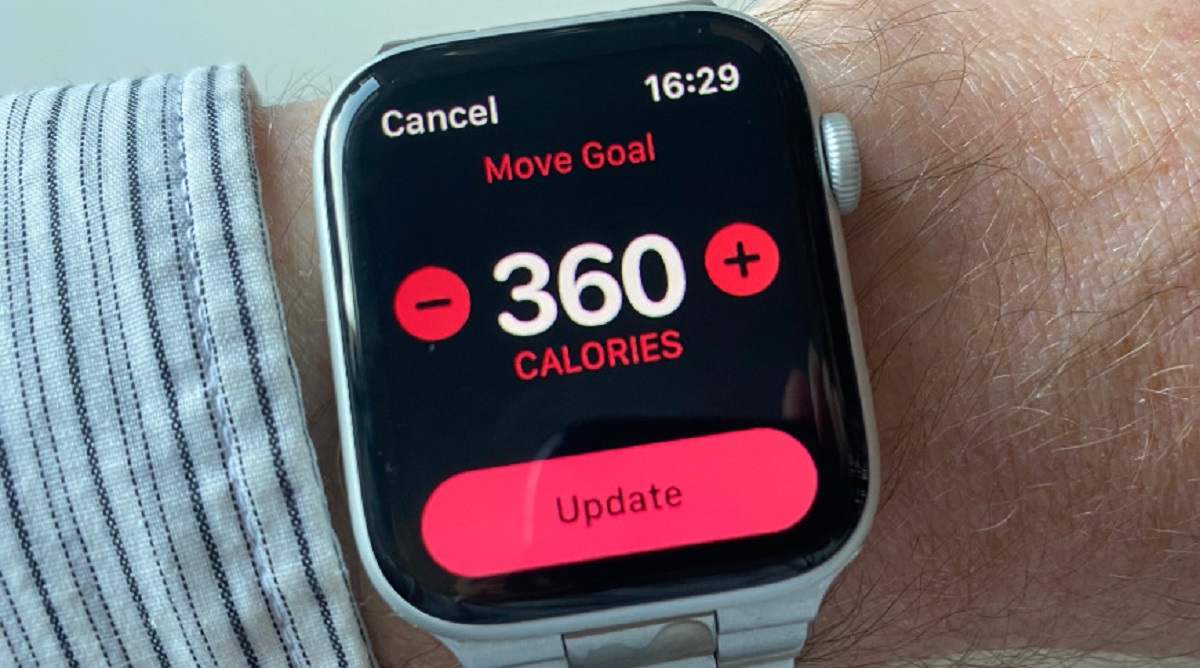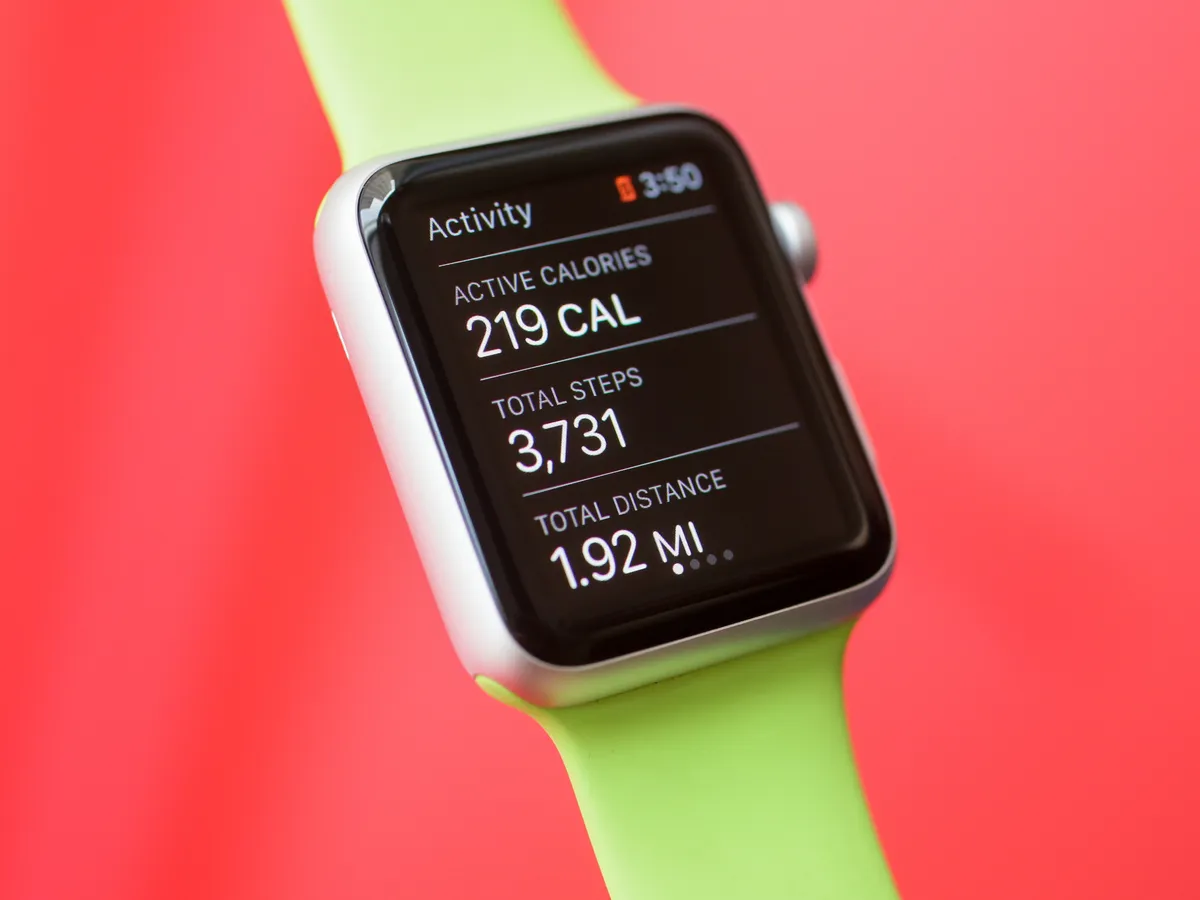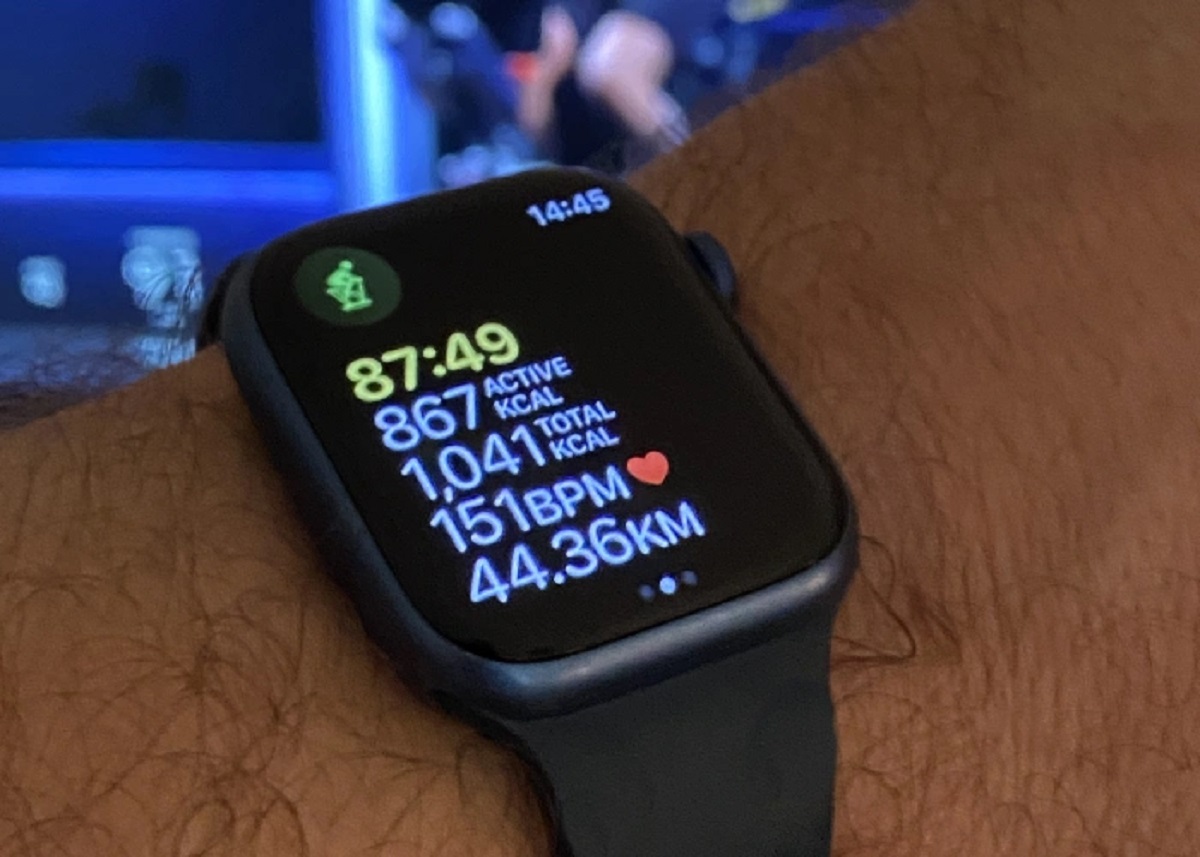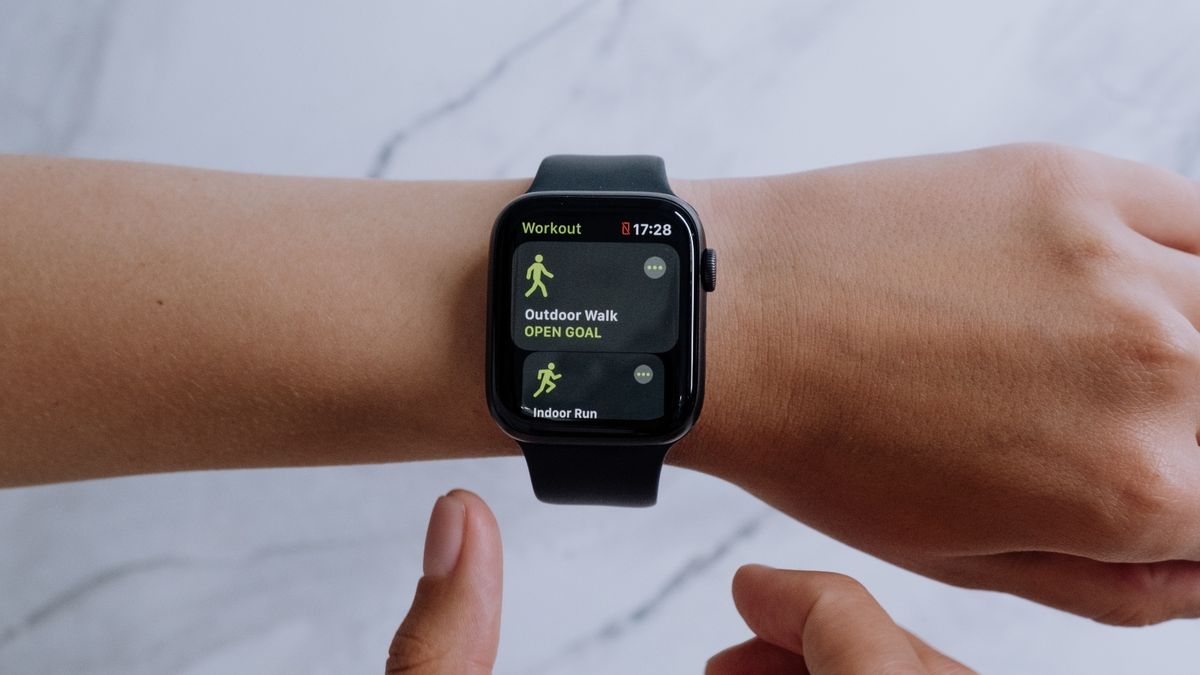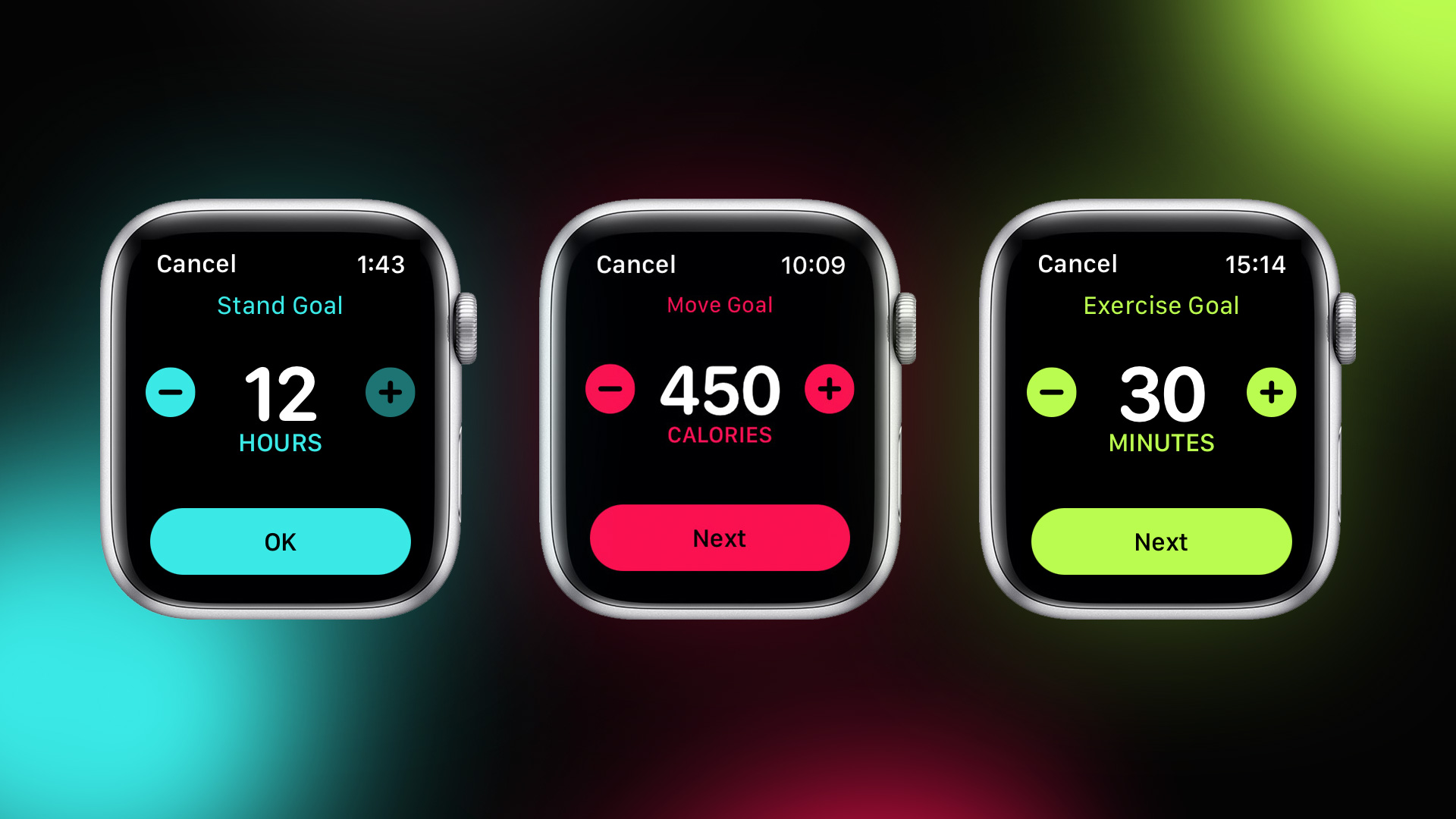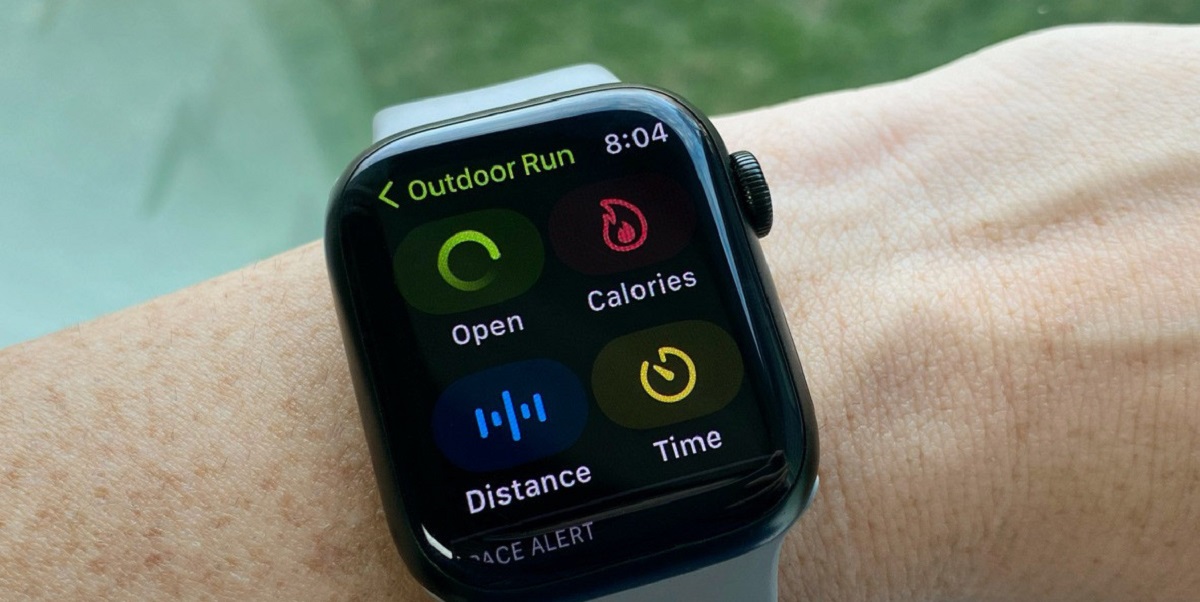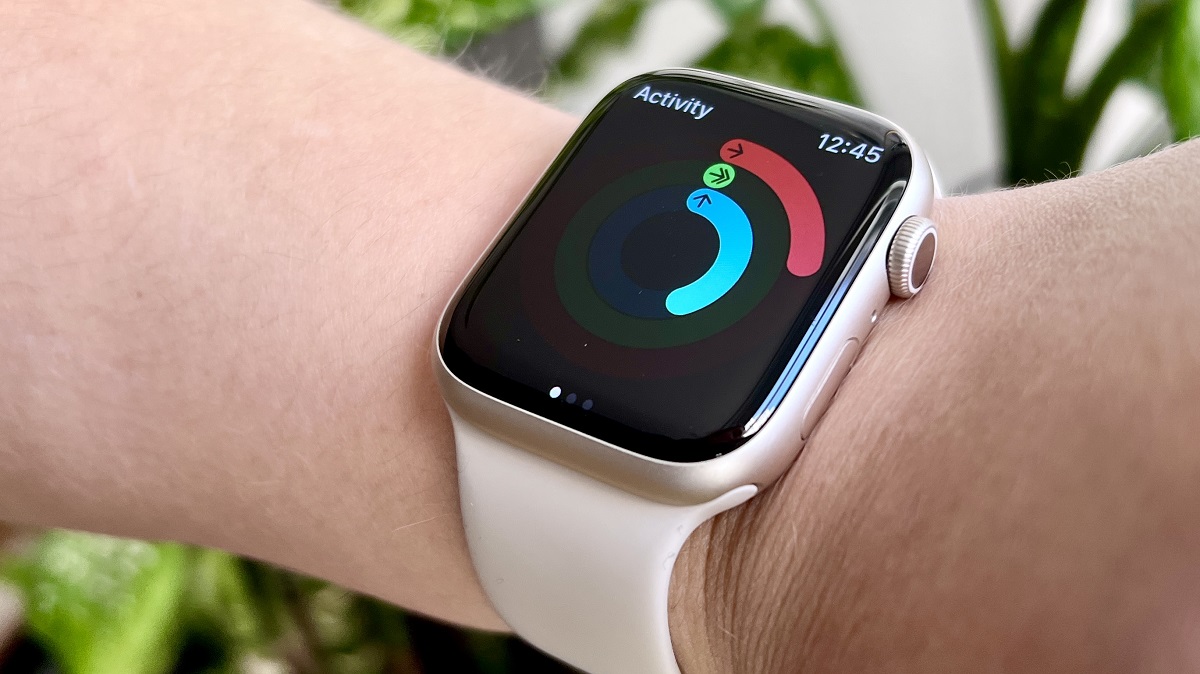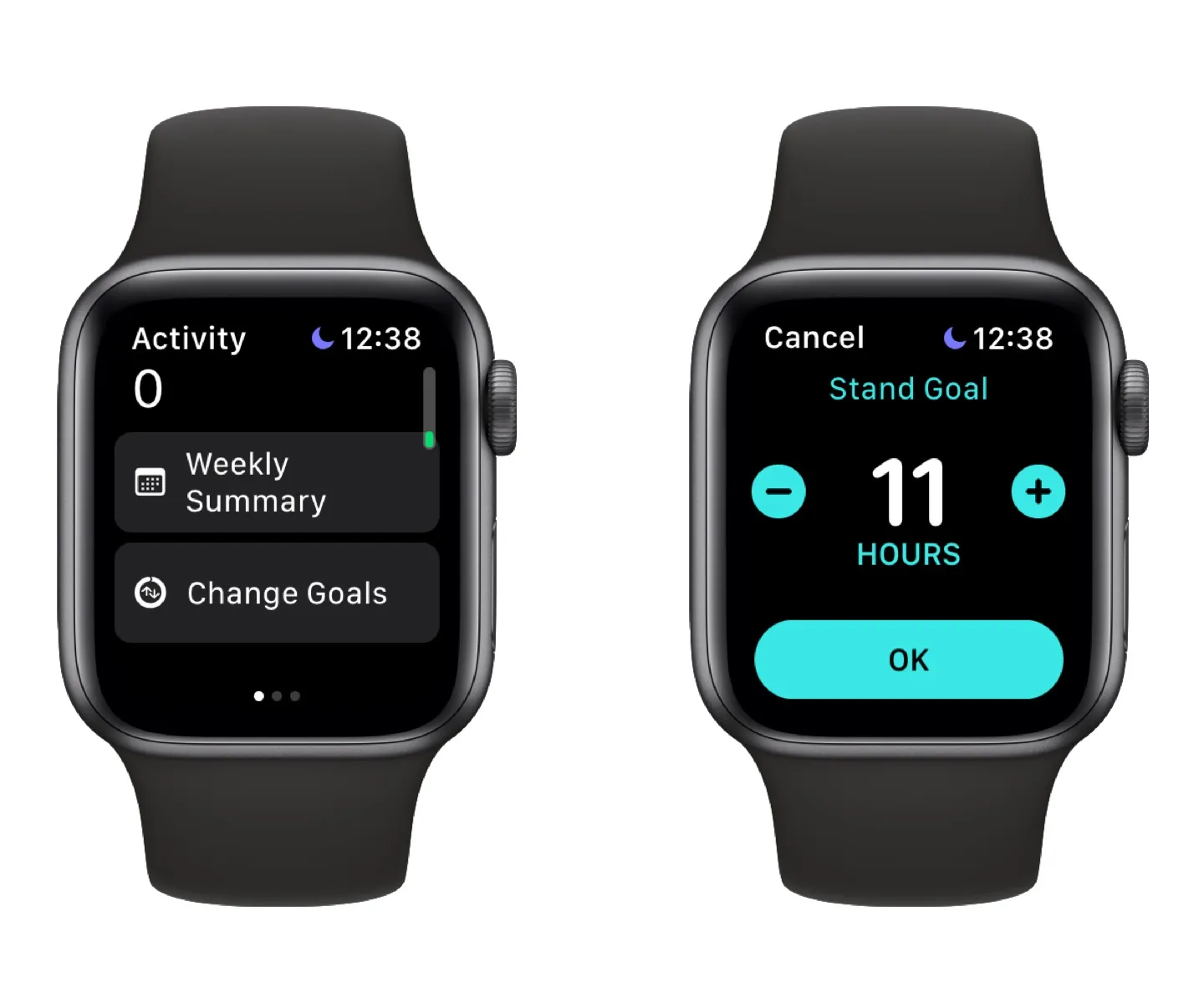Introduction
Keeping track of calorie goals is an essential part of maintaining a healthy lifestyle. With the advancement of technology, smartwatches like the Apple Watch have made it easier than ever to monitor and manage daily calorie intake and expenditure. The Apple Watch comes equipped with a range of features and apps that can help you stay on track with your fitness goals.
Whether you are looking to lose weight, maintain your current weight, or even gain muscle mass, setting and adjusting your calorie goals on the Apple Watch is a simple process. In this article, we will explore the different methods you can use to change your calorie goals on your Apple Watch.
Before we delve into the specifics, it is important to understand the significance of tracking calorie goals. Monitoring calorie intake and expenditure provides valuable insights into your overall health and fitness progress. By setting realistic and achievable goals, you can make informed decisions about your diet and exercise routine. Whether you are counting calories to lose weight, maintain weight, or even bulk up, the Apple Watch can be a helpful tool in keeping you accountable and on track.
One of the key advantages of using the Apple Watch is its ability to accurately calculate calorie goals based on your individual profile and activity levels. The watch takes into account factors such as age, weight, height, gender, and activity level to provide personalized calorie goals that align with your specific needs. This allows for a more tailored approach to achieving your fitness objectives.
In the following sections, we will walk you through the various methods you can utilize to change your calorie goals on the Apple Watch. Whether you prefer using the Apple Watch itself or the companion iPhone app, there are multiple ways to adjust your goals and stay motivated on your fitness journey.
The Importance of Tracking Calorie Goals
Tracking calorie goals is crucial for anyone looking to achieve and maintain a healthy lifestyle. Here are some reasons why monitoring your calorie intake and expenditure is important:
- Awareness: By tracking your calorie goals, you become more aware of the energy you are consuming through your diet and the amount of energy you are burning through physical activity. This awareness helps you make better decisions about portion sizes and food choices.
- Weight Management: Whether you want to lose, maintain, or gain weight, tracking calorie goals is vital. By setting specific goals and tracking your progress, you can adjust your diet and exercise accordingly to achieve the desired outcome.
- Accountability: Keeping track of your calorie goals holds you accountable and promotes a sense of discipline. It helps you stay committed to your health and fitness journey and makes you more mindful of how your behaviors align with your goals.
- Motivation: Tracking calorie goals allows you to see the progress you are making over time. Seeing tangible results, such as reaching a calorie deficit or maintaining a consistent calorie intake, can be highly motivating and encourage you to keep pushing towards your goals.
- Sustainable Habits: By tracking your calorie goals, you gain insights into your eating patterns and can develop healthier habits. It helps you identify areas where you can make improvements and create a sustainable approach to nutrition and exercise.
Furthermore, tracking calorie goals can be highly beneficial if you have specific health or fitness-related objectives. Whether you are aiming to build muscle, improve athletic performance, or manage certain medical conditions, having a clear understanding of your calorie intake and expenditure can support these goals.
With the Apple Watch, tracking your calorie goals becomes even easier. The watch offers a range of features and apps designed to help you monitor and manage your calorie intake and expenditure effectively.
Now that we understand the importance of tracking calorie goals, let us explore the different methods available to change your calorie goals on the Apple Watch. By having the flexibility to adjust your goals, you can ensure that they remain challenging yet achievable, making your fitness journey more effective and enjoyable.
How Apple Watch Calculates Calorie Goals
The Apple Watch utilizes advanced algorithms and sensor data to calculate personalized calorie goals. The watch takes into account various factors to provide you with accurate and customized targets. Here’s how the Apple Watch calculates calorie goals:
1. Profile Information: When you set up your Apple Watch, you input your personal details such as age, gender, height, and weight. This information serves as the foundation for calculating your calorie goals.
2. Basal Metabolic Rate (BMR): The Apple Watch considers your Basal Metabolic Rate, which is the amount of energy your body needs to perform basic functions while at rest. Factors such as age, weight, height, and gender contribute to determining your BMR. This value indicates the minimum number of calories your body needs to function properly throughout the day.
3. Active Calories: The Apple Watch measures your physical activity through its sensors and heart rate monitor. It calculates the calories you burn during exercise and physical movement, known as active calories. This data is combined with your BMR to provide you with an accurate estimation of your total daily calorie burn.
4. Move, Exercise, and Stand Goals: The Apple Watch encourages a well-rounded fitness routine by setting goals for three key areas: Move, Exercise, and Stand. The Move goal represents the number of active calories you aim to burn each day, the Exercise goal tracks the minutes of dedicated exercise, and the Stand goal encourages you to stand and move around for at least one minute every hour.
5. Adjustments and Fitness Level: The Apple Watch allows you to manually adjust your calorie goals to align with your specific fitness level and objectives. Whether you are just starting or have been on a fitness journey for a while, you can make modifications to ensure that your goals are challenging yet attainable.
By considering these factors and continuously monitoring your activity levels, heart rate, and progress, the Apple Watch provides accurate calorie goals to support your fitness goals. It ensures that you have a clear target to work towards, helping you make informed decisions about your diet and exercise regimen.
Now that we have a better understanding of how the Apple Watch calculates calorie goals, let’s explore the different methods available to change and adjust these goals on your device.
Ways to Change Calorie Goals on Apple Watch
Changing your calorie goals on the Apple Watch is a straightforward process, and there are multiple methods you can utilize to make adjustments. Let’s explore the different ways you can change your calorie goals:
Method 1: Using the Activity App on the Apple Watch: The Activity app directly on your Apple Watch allows you to change your move goal, which represents the number of active calories you aim to burn each day. Simply open the Activity app, firmly press the display, tap “Change Move Goal,” and adjust the goal using the plus or minus buttons.
Method 2: Using the Activity App on the iPhone: Another way to modify your calorie goals is through the Activity app on your iPhone. Open the app, tap on the “History” tab at the bottom, select the “Change Goals” option, and choose “Move” to adjust your active calorie goal. Follow the on-screen instructions to set a new target.
Method 3: Using Third-Party Fitness Apps: If you prefer using third-party fitness apps to track your activities, you can also change your calorie goals through these apps. Many popular fitness apps, such as MyFitnessPal and Strava, integrate with the Apple Watch and allow you to adjust your goals within their respective settings or profile sections.
Method 4: Using Health App on the iPhone: The Health app on your iPhone serves as a centralized hub for all your health and fitness data. You can change your calorie goals by accessing the Health app, tapping on your profile picture, selecting “Browse,” and navigating to “Activity.” From there, you can adjust your move goal and other activity-related targets.
Regardless of the method you choose, it is important to make realistic and attainable adjustments to your calorie goals. Setting goals that are too high can lead to frustration or burnout, while goals that are too low may not challenge you enough. Consult with a healthcare professional or a certified fitness trainer to help you determine appropriate and personalized targets.
Remember, it’s essential to reassess and adapt your calorie goals periodically based on your progress and changing circumstances. As you become more active or experience shifts in your weight or fitness level, adjusting your goals ensures that they remain relevant and effective.
Now that you know how to change your calorie goals on the Apple Watch, let’s dive into some tips on setting realistic and achievable targets to support your health and fitness journey.
Method 1: Using the Activity App on the Apple Watch
The Activity app on the Apple Watch provides a convenient and straightforward way to change your calorie goals. Follow these steps to adjust your move goal, which represents the number of active calories you aim to burn each day:
- Open the Activity app by tapping on the colorful rings icon on your Apple Watch’s home screen.
- Firmly press the display to access additional options.
- Tap on “Change Move Goal.”
- Using the plus or minus buttons, adjust the move goal to your desired target.
- Once you have set your new move goal, tap on “Update” to save the changes.
By completing these steps, your Apple Watch will now track your progress towards your updated move goal. It will provide real-time updates and notifications to keep you motivated and on track throughout the day.
The Activity app also offers additional features to help you achieve your calorie goals. For instance, it provides daily progress updates, allowing you to monitor your activity level and make adjustments if necessary. The app also encourages you to close your rings by reaching your move, exercise, and stand goals. Closing these rings indicates that you have achieved your targets for the day.
Remember, it is essential to set realistic and achievable calorie goals that align with your current fitness level and objectives. Gradually increase your move goal over time as you become more active and build up your endurance. Pushing yourself too hard too soon could lead to burnout or injury, so it’s important to listen to your body and make gradual adjustments based on your progress.
Using the Activity app on your Apple Watch provides a convenient way to track and adjust your calorie goals. Take advantage of this tool to stay motivated, challenge yourself, and make progress towards a healthier and more active lifestyle.
Now that you are familiar with using the Activity app on your Apple Watch to change your calorie goals, let’s explore another method – using the Activity app on your iPhone.
Method 2: Using the Activity App on the iPhone
If you prefer to make changes to your calorie goals using a larger screen and more detailed interface, you can utilize the Activity app on your iPhone. Follow these steps to adjust your calorie goals:
- Open the Activity app on your iPhone. It is represented by a multi-colored rings icon.
- At the bottom of the screen, tap on the “History” tab.
- Now, select the “Change Goals” option located at the bottom center of the screen.
- From the list of available options, choose “Move” to adjust your active calorie goal.
- On the next screen, use your finger to slide the goal indicator to the desired level. Alternatively, you can tap on the plus or minus buttons to make incremental adjustments.
- Once you have set your new move goal, tap on the “Done” or “Update” button to save the changes.
After following these steps, your updated calorie goal will be synced with your Apple Watch. The watch will now track your progress towards your new target and provide you with real-time updates to keep you motivated.
Using the Activity app on your iPhone presents additional benefits. The larger screen allows for a more detailed overview of your activity data and progress. You can easily view your daily, weekly, and monthly trends, as well as compare your current performance to past achievements.
The iPhone app also provides you with personalized recommendations to help you reach your calorie goals. It suggests specific activities and workouts that can contribute to your active calorie burn. You can explore various workout types, such as running, cycling, yoga, and more, to diversify your fitness routine and stay engaged.
Remember, adjusting your calorie goals should be done cautiously and based on your individual needs and capabilities. It’s important to set goals that challenge you but are attainable. Consult with a healthcare professional or a certified fitness trainer to determine appropriate targets that align with your specific health and fitness objectives.
Now that you have learned how to change your calorie goals using the Activity app on your iPhone, let’s explore another method – using third-party fitness apps.
Method 3: Using Third-Party Fitness Apps
If you prefer using third-party fitness apps to track your activities and monitor your calorie goals, you can still make adjustments through these apps while utilizing the Apple Watch. Here’s how:
- Ensure that you have downloaded and installed the third-party fitness app of your choice on your iPhone.
- Launch the app and navigate to the settings or profile section.
- Look for options related to activity or calorie goals within the app’s settings.
- Depending on the app, you may find options to adjust your move goal, active calorie goal, or specific targets for different activity types.
- Use the provided interface or sliders to modify your calorie goals according to your preferences.
- Once you have made the necessary adjustments, save the changes within the app.
By following these steps, you can modify your calorie goals within the third-party fitness app of your choice. Once updated, the app will communicate with your Apple Watch, allowing it to track and display your progress towards the adjusted goals.
Third-party fitness apps offer a wide range of features and capabilities beyond what the native Apple Watch apps provide. These apps often have extensive databases of exercises, meal plans, and community features to support your fitness journey.
Many popular fitness apps, such as MyFitnessPal, Strava, and Nike Training Club, integrate seamlessly with the Apple Watch. This integration enables you to access and modify your calorie goals directly from the app interface on your iPhone while still benefiting from the Apple Watch’s tracking capabilities.
It’s important to note that the availability and specifics of adjusting calorie goals within third-party fitness apps may vary. Therefore, it’s essential to explore the settings and features of each app to find the appropriate options to modify your goals.
Remember to set realistic and achievable calorie goals that align with your current fitness level and objectives. Gradually increase your goals over time as you become stronger and more active. Regularly assess your progress and make adjustments as needed to continue challenging yourself while avoiding potential burnout or injury.
Now that you know how to adjust your calorie goals using third-party fitness apps, let’s explore another method – using the Health app on your iPhone.
Method 4: Using the Health App on the iPhone
The Health app on your iPhone serves as a central hub for all your health and fitness data. It also provides an option to change your calorie goals. Here is how you can adjust your goals using the Health app:
- Open the Health app on your iPhone. It has a white icon with a red heart symbol.
- Tap on your profile picture, located in the top-right corner of the screen.
- Next, select “Browse” to explore the different health categories.
- Scroll down and find and tap on “Activity.” This section contains all the data related to your fitness and activity levels.
- Now, select “Active Calories” under the “Active Energy” category.
- You will see your current active calorie goal. Tap on “Edit” in the top-right corner to modify it.
- Enter your desired calorie goal using the on-screen keyboard or the plus and minus buttons.
- Once you have specified your new goal, tap on “Done” in the top-right corner to save the changes.
By following these steps, you can easily adjust your active calorie goal using the Health app on your iPhone. The changes you make here will be reflected in your Apple Watch’s activity tracking and will help you monitor your progress towards your new target.
The Health app offers a comprehensive overview of your health and wellness data, including steps, distance, workouts, and more. It allows you to integrate and view data from various apps and devices, providing a holistic view of your progress.
In addition to adjusting calorie goals, the Health app enables you to set goals for other health metrics, such as sleep, nutrition, and mindfulness. This comprehensive approach allows you to manage and monitor various aspects of your well-being in one place.
Remember, when adjusting your calorie goals, it’s important to set targets that are challenging yet attainable. Consult with a healthcare professional or a certified fitness trainer to ensure that your goals align with your specific needs and objectives.
Now that you know how to modify your calorie goals using the Health app on your iPhone, let’s move on to some tips for setting realistic and achievable goals.
Tips for Setting Realistic Calorie Goals
Setting realistic and achievable calorie goals is essential for maintaining motivation and making sustainable progress on your health and fitness journey. Here are some tips to help you establish effective goals:
- Evaluate Your Current Lifestyle: Take an honest look at your current eating habits, activity level, and fitness routine. Consider any limitations or time constraints that may impact your ability to achieve specific goals.
- Consult with a Professional: Seeking guidance from a registered dietitian or certified fitness trainer can provide valuable insights and help you set realistic goals based on your unique needs and circumstances.
- Be Specific: Set clear and specific calorie goals. For example, instead of aiming for a general weight loss, set a specific target, such as losing 1 pound per week by creating a calorie deficit of 500 calories per day.
- Consider Timeframes: Break larger goals into smaller, more manageable segments. By setting weekly or monthly goals, you can track your progress and stay motivated as you achieve smaller milestones along the way.
- Gradually Increase Goals: Start with realistic goals and gradually increase them over time as you become fitter and more comfortable with your routine. This allows for steady progress and minimizes the risk of burnout or injury.
- Use SMART Goals: The SMART goal-setting framework can be helpful. Ensure your goals are Specific, Measurable, Attainable, Relevant, and Time-bound.
- Take Body Composition into Account: Rather than solely focusing on weight, consider body composition changes. This includes reducing body fat and increasing muscle mass, which may require different approaches to calorie goals.
- Track and Monitor: Utilize fitness tracking apps, such as the Activity app on the Apple Watch, to monitor your progress and adjust goals accordingly. Regularly review your data and make adjustments when necessary.
- Listen to Your Body: Pay attention to hunger cues, energy levels, and overall well-being. If you feel constantly fatigued or deprived of energy, it may be a sign that your calorie goals are too restrictive.
- Celebrate Non-Scale Victories: Recognize and celebrate achievements beyond the numbers on the scale. Improved energy levels, increased endurance, and better sleep are all indicators of progress.
Remember that everyone’s journey is unique, and it’s important to focus on your own progress rather than comparing yourself to others. Stay committed, be flexible, and adapt your goals as you learn more about your body and what works best for you.
By setting realistic and achievable calorie goals, you can maintain a balanced and sustainable approach to your health and fitness, leading to long-term success.
Now that you have some valuable tips for setting realistic calorie goals, let’s summarize the key points discussed in this article.
Conclusion
Setting and adjusting calorie goals on your Apple Watch is a simple and effective way to track your progress and maintain a healthy lifestyle. Whether you use the Activity app on the Apple Watch itself, the iPhone app, or third-party fitness apps, there are multiple methods available to modify your goals based on your individual needs and preferences.
Tracking calorie goals is important as it increases your awareness of your energy intake and expenditure. It helps you manage your weight, stay accountable, and make informed decisions about your diet and exercise routine. The Apple Watch calculates your personalized calorie goals based on factors such as age, weight, height, gender, and activity level, providing you with tailored targets to work towards.
By utilizing the Activity app on the Apple Watch or iPhone, you can easily adjust your calorie goals, view your progress, and receive real-time updates and notifications to stay motivated. Additionally, third-party fitness apps and the Health app on your iPhone offer further customization options and insightful data to support your fitness journey.
When setting your calorie goals, remember to be realistic, specific, and consider your current lifestyle and fitness level. Gradually increase your goals over time and consult with professionals if needed. Focus on non-scale victories and listen to your body to ensure a balanced and sustainable approach.
Now that you have the knowledge and tools to change and adjust your calorie goals on your Apple Watch, it’s time to take control of your health and fitness journey. Set goals, stay dedicated, and enjoy the progress you make along the way.







